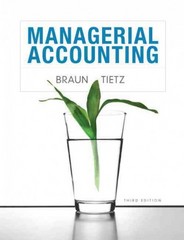Please Help!
Laker Company reported the following January purchases and sales data for its only product. Date Activities Units Acquired at Cost Units sold at Retail Jan. 1 Beginning inventory 170 units@ $9.50 = $1,615 Jan. 10 sales 130 units a $18.50 Jan. 20 Purchase 120 units@ $8.50 = 1,020 Jan. 25 Sales 130 units 6 $18.50 Jan. 30 Purchase 240 units@ $8.00 = 1,920 Totals 530 units $4,555 260 units The Company uses a perpetual inventory system. For specific identication, ending inventory consists of 270 units, where 240 are from the January 30 purchase, 5 are from the January 20 purchase, and 25 are from beginning inventory. uired: omplete the table to determine the cost assigned to ending inventory and cost of goods sold using specific identication. letermine the cost assigned to ending inventory and to cost of goods sold using weighted average. Ietermine the cost assigned to ending inventory and to cost of goods sold using FIFOt ietermine the cost assigned to ending inventory and to cost of goods sold using LIFO. :omplete this question by entering your answers in the tabs below. equired 1 Required 2 Required 3 Required 4 )mpIete the table to determine the cost assigned to ending inventory and cost of goods sold using specific identification. (Round cost per unit to 2 decimal Required 1 Required 2 Required 3 Required 4 Complete the table to determine the cost assigned to ending inventory and cost of goods sold using specific identification. (Round cost pe places.) Specific Identification Available for Sale Cost of Goods Sold Ending Inventory Unit Units Ending Cost Per Ending Purchase Date Activity Units Cost Sold Unit Cost COGS Inventory- Unit Inventory- Units Cost Jan. 1 Beginning inventory 170 $ 9.50 19 $ 9.50 $ 181 Jan. 20 Purchase 120 $ 8.50 9 $ 8.50 $ 77 Jan. 30 Purchase 240 $ 8.00 260 $ 8.00 2,080 530 0 EA 0 288 2,338Weighted Average - Perpetual: Goods Purchased Cost of Goods Sold Inventory Balance Date # of Cost per # of units Cost per Cost of Goods # of units Cost per Inventory units unit sold unit Sold unit Balance January 1 170 @ $ 9.50 $ 1,615.00 January 10 January 20 Average cost January 25 January 30 TotalsPerpetual FIFO: Goods Purchased Cost of Goods Sold Inventory Balance Date # of Cost per # of units Cost per Cost of Goods Cost per Inventory units unit sold unit Sold # of units unit Balance January 1 170 @ $ 9.50 E $ 1,615.00 January 10 January 20 January 25 January 30 TotalsDetermine the cost assigned to ending inventory and to cost of goods sold using LIFO. (Round cost per unit to 2 decimal places.) Perpetual LIFO: Goods Purchased Cost of Goods Sold Inventory Balance Date # of Cost per # of units Cost per Cost of Goods Cost per Inventory units unit sold unit Sold # of units unit Balance January 1 170 @ $ 9.50 $ 1,615.00 January 10 January 20 January 25 January 30 Totals











